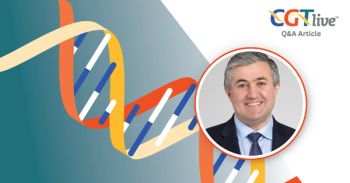
VTD induction boosts CRs in newly diagnosed myeloma
;In patients with newly diagnosed multiple myeloma, the addition of bortezomib (Velcade) to thalidomide (Thalomid) and dexamethasone significantly increased response rates, compared with thalidomide plus dexamethasone alone, when used as induction therapy prior to autologous stem cell transplant (ASCT
ATLANTAIn patients with newly diagnosed multiple myeloma, the addition of bortezomib (Velcade) to thalidomide (Thalomid) and dexamethasone significantly increased response rates, compared with thalidomide plus dexamethasone alone, when used as induction therapy prior to autologous stem cell transplant (ASCT). Michele Cavo, MD, of the Sergnoli Institute of Hematology, University of Bologna, Italy, presented the interim results of the phase III trial at ASH 2007 (abstract 76) on behalf of the Italian Myeloma Network (GIMEMA).
All patients received three 21-day courses of induction therapy prior to ASCT. The VTD regimen consisted of bortezomib 1.3 mg/m2 on days 1, 4, 8, and 11, plus dexamethasone 40 mg on each day of and after bortezomib administration. Thalidomide was dosed at 200 mg/d from days 1 to 63. Patients on the thalidomide/dexamethasone (TD) regimen received thalidomide as in the VTD arm and dexamethasone 40 mg/d on days 1-4 and 9-12, every 21 days.
Both regimens were administered before (induction) and after (consolidation) double ASCT with melphalan 200 mg/m2. The primary endpoint was complete response to induction therapy, either immunofixation negative (CR) or immunofixation positive (nCR).
Dr. Cavo reported on the first 256 patients. By intent-to-treat analysis, addition of bortezomib resulted in a significantly greater CR/nCR rate, compared with TD alone (36% vs 9%, P < .001).
"Complete remission is widely recognized as a predictor for long-term survival," Dr. Cavo commented.
Adverse events of grade 3 or higher were similar between the two groups.
In a subset of patients for whom longer follow-up was available, post-ASCT complete response rates were significantly higher for patients on the bortezomib-containing regimen, compared with the TD regimen (57% vs 28%, P < .001).
"Importantly," Dr. Cavo said, "the fourfold increase in CR for VTD, compared with TDthe most commonly used front-line therapy for myeloma in the United Stateswas not adversely affected by the presence of cytogenetic abnormalities, and translated into a significant benefit, compared with TD, after a single autologous transplant."
Newsletter
Stay at the forefront of cutting-edge science with CGT—your direct line to expert insights, breakthrough data, and real-time coverage of the latest advancements in cell and gene therapy.


















































